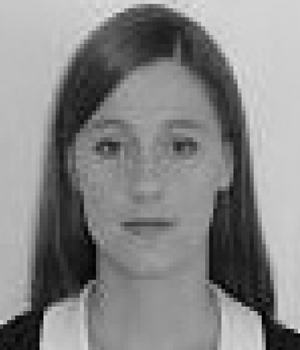Introduction
In the past few years, several emerging technologies have been developed, such as inkjet printing (IJP), aerosol jet printing (AJP), screen printing, spray printing, nScrypt, and gravure printing. [Reference Borghetti, Cantù, Sardini and Serpelloni1, Reference Cruz, Rocha and Viana2]. Recently, interesting research has been performed using technologies such as IJP and AJP based on the direct writing approach, allowing noncontact deposition [Reference Seifert, Sowade, Roscher, Wiemer, Gessner and Baumann3] on rigid (glass, alumina, Poly-Ether-Ether-Ketone (PEEK), etc.) or flexible (polyethylene terephthalate (PET), polyimide (PI), paper, etc.) substrates [Reference Baron4]. These technologies have become increasingly present in different fields (medical, photovoltaic, electronics, smart systems, aeronautics, etc.) [Reference Mitra, Alalawe, Voigt, Boeffel and Baumann5]. These printing techniques are based on Computer Aided Design (CAD) manufacturing approaches [Reference Seifert, Sowade, Roscher, Wiemer, Gessner and Baumann3], which start from the generation of digital files to the printing of samples by depositing metal layers without taking a mask manufacturing step (such as in conventional photolithography) [Reference Rao Balakrishnan and Asri6].
IJP is a technology used for depositing thin layers on planar supports. It is widely used in the field of printed electronics [Reference Abdelghani7, Reference Macuri8]. Because of its maturity, quick prototyping, versatility, and low cost, IJP technology is the most widely used printing technology in the industry [Reference Macuri8, Reference Lee, Seo, Yun, Joung, Oh and Yook9].
The high resolution of AJP allows the printing of millimetric components on planar or 3D supports (inclined, half sphere, slope, etc.) [Reference Delage10] and reaches sub-millimetric frequencies [Reference Delage10, Reference Florent11] to satisfy the most demanding fields, such as aerospace and defence telecommunication applications.
Electronic components are printed by using printing technologies based on metallic nanoparticle inks, such as silver [Reference Hu, Guo, Alarifi, Patane, Zhou, Compagnini and Xu12], gold [Reference Delage10, Reference Minari, Kanehara, Liu, Sakamoto, Yasuda, Yaguchi, Tsukada, Kashizaki and Kanehara13], and copper [Reference Joo, Hwang and Kim14]. In the field of electronics, these inks are most commonly used because of their ease of formulation and good electrical properties. Because of the low cost and good conductivity of copper (bulk conductivity: 59 S/μm) [Reference Xu, Tang, Sun, Zhao and Li15], it is a good option, but its high oxidation rate in ambient air and lower maturity have greatly reduced interest in this type of ink in terms of engineering [Reference Sarkar, Gupta and Gupta16]. However, being cheaper than gold and more thermodynamically stable than copper, silver inks with good dispersion, maturity, and excellent conductivity (bulk conductivity: 63 S/μm) [Reference Xu, Tang, Sun, Zhao and Li15] have become an easy choice for printed electronics [Reference Delage10].
Sintering technologies are increasingly used in industry because of their importance in the military field and automotive sector. At one time, sintering was also used for the production of technical ceramics for electronics and the medical field.
Especially in the field of printed electronics, heat treatment is subdivided into two steps. The first step is drying to evaporate the organic substances present in the different inks (solvents, binders, anti-caking agents, etc.) [Reference Wang, Zhao, Liang, Zhu and Sun17]. The second step is sintering, which is crucial for the coalescence between the metal particles to improve the cohesion of the metal deposit and thus obtain good effective conductivity of the deposit [Reference Moon, Dong, Maric, Pothukuchi, Hunt, Li and Wong18].
Conventional heat treatment is generally used for resistant substrates with high glass transition temperatures (alumina, Rogers, glass, etc.) that can last for hours and reach high sintering temperatures of up to 1000°C for ceramics, for example [Reference Ndayishimiye19].
Andrievski has shown that for identical thermal cycles, the decrease in particle size allows a reduction in the sintering starting temperature, which improves the densification kinetics and results in a higher relative density according to the temperature [Reference Florent11, Reference Ndayishimiye19]. This Herring similarity law shows the dependence of the particle size on the sintering temperature. A more detailed dependence is shown in [Reference Herring20]. Because of the nanometric size of the metal particles, the sintering temperature has been drastically reduced, which represents a transformation in the field of printed electronics. At lower thermal sintering temperatures (200°C) than usual, the electrical conductivity of the metal deposit can reach 20 S/μm and higher without damage to the metal layer or the substrate used [Reference Delage10].
In recent years, the development of printed electronics using polymer substrates has attracted considerable attention due to the potential of flexible and low-cost electronic devices. The limiting factor of the most commonly used polymer substrates is their low glass transition temperatures (T g (PLA) = 60°C, T g (PET) = 70°C, T g (Acrylonitrile Butadiene Styrene (ABS)) = 110°C, T g (Polyethylene Naphthalate (PEN)) = 120°C, etc.) [Reference Rieger21, Reference Khan, Dahiya and Lorenzelli22]. After metallization of polymer substrates, alternatives to high-temperature heat treatment will be used to improve the electrical conductivity of the metal deposits.
To solve the constraints related to the sintering of metallic nanoparticle inks on a flexible support, a large community of researchers and industrialists are interested in the development of new, selective sintering technologies. These technologies are mainly based on the concept of sintering only the ink while minimizing the thermal effect with the substrate. We can mention plasma sintering, fast electrical sintering, and sintering using electromagnetic excitation (infrared, laser, and photonic sintering by intense pulsed light (IPL)) [Reference Baudino23].
The most commonly used treatments that give relevant results are laser sintering and sintering using short pulses of light, often called intense pulsed light sintering (IPL). The first treatment consists of scanning the laser near or on the metal layers [Reference Lopes, Lee, MacDonald, Quintana and Wicker24] to densify the metal deposit locally and improve electrical conductivity.
The second treatment is based on the absorption by the metallic ink of light intensity and its conversion into thermal energy. Light is generated by xenon stroboscopic lamps with a wide emission spectrum. The light intensity is mainly localized in the visible range and corresponds well with the absorption of metallic nanoparticle inks.
In the state of the art, metallic deposits printed by additive technologies (IJP) with average thicknesses of 0.35 μm on polymer substrates (PET) and treated by laser sintering have DC electrical conductivities between 4.7 S/μm [Reference Kim, Hwang, Kang, Kang, Lee and Moon25] and 10.4 S/μm [Reference Kim, Kang, Kang, Lee, Hwang, Moon and Moon26].
For metal deposits printed by IJP with thicknesses between 1 and 10 μm on PI, the DC electrical conductivities are between 1.2 S/μm [Reference Lee, Park, Jang, Kim, Oh and Song27] and 21 S/μm [Reference Kang, Ryu, Kim and Hahn28].
PI is a flexible polymer substrate that is attracting the attention of researchers in several fields because of its excellent mechanical properties and good flexibility, chemical resistance, and electrical properties [Reference Krebs29, Reference Sun and Rogers30]. Its high glass transition temperature and thermal resistance (T g (PI) = 270°C) [Reference Khan, Dahiya and Lorenzelli22] makes it an excellent competitor, particularly in low-cost flexible electronics. For silver deposits printed by direct writing technologies on PI substrates and heat-treated at temperatures between 150 and 220°C, the DC electrical conductivity varies between 22 and 25 S/μm [Reference Lee, Park, Jang, Kim, Oh and Song27, Reference Kang, Ryu, Kim and Hahn28].
Most of the literature has focused on DC electrical conductivity without providing information on the equivalent electrical conductivity as a function of microwave frequencies, which represents a limiting point for microwave applications.
In this paper, to optimize the performances of microwave planar filters dedicated to demanding applications, such as aerospace and defence, we propose to focus on direct printing technologies with silver ink (IJP and AJP). Standard planar ring resonators that operate in the frequency band (5–21 GHz) on a PI substrate have been selected as a representative resonator for these applications.
Our research will focus in particular on the improvement of the quality factor of this type of planar resonator using alternative treatment technologies (IPL and laser). This work will be based on three main axes. The first axis quantifies the improvement of the quality factor of these planar resonators during the treatment. The second axis consists of improving the ratio between the total treatment time and the quality factor of the planar resonators. Finally, the last axis presents the technique of extraction of the equivalent conductivity of the metallic deposit at different microwave frequencies, which represents one of the particularities of our paper.
This paper is subdivided into two main sections:
The first section will describe the microwave sample used for our research (planar microwave resonator), as well as the alternative sintering by IPL or laser and the microwave conductivity extraction technique. Illustrations by SEM (scanning electron microscope) and microscopic images of the metal layer after each IPL or laser treatment are also provided. The second section summarizes the results after IPL and laser sintering and the trade-off between conductive deposition and reduced processing time.
An earlier version of this paper was presented at the EuMW2020 conference and was published in its Proceedings [Reference Hajjaji, Delhote, Verdeyme, Piechowiak and Durand31]. In this extended version, two additional IPL processing parameters are presented accompanied by SEM images of a sectional view of the metal deposit. A new laser processing technology accompanied by SEM images before and after sintering is also added and compared to a previous work proposed at the EuMW2019 conference [Reference Hajjaji, George, Lmansouri, Delhote, Verdeyme, Baillargeat, Piechowiak and Durand32]. All the mentioned results are summarized in this paper along with the technological parameters and general recommendations needed to reproduce them.
Experiments
IPL sintering
IPL sintering consists of using an extremely powerful flash lamp with a broad and adjustable spectrum, including infrared, visible, and ultraviolet (UV) light. It sends intense, short pulses of light that are converted into heat to fuse ceramic or metal particles at room temperature without damaging substrates, which are often heat-sensitive (paper, cloth, plastic, thermoplastic, etc.). This treatment technique saves time and can homogeneously sinter a metal surface, particularly over large areas. This new technique was developed by NovaCentrix in 2006, but it remains less widespread than other sintering technologies for microwave applications.
The sintering equipment used in this work is a Xenon X-1100 IPL system that generates precisely controlled light pulses of high intensity. This system is presented in [Reference Hajjaji, Delhote, Verdeyme, Piechowiak and Durand31] with more details. Notably, the system cannot deliver the same energy for each light pulse. A typical profile of the train of pulses is shown in Fig. 1. The number of pulses can be selected, as well as their duration (TON) and the time between two pulses (TOFF).

Fig. 1. Typical profile of the light pulses.
The IPL sintering system consists of the following components: a xenon flash lamp, a reflector, a UV filter, a power supply, capacitors, and a simmer triggering pulse controller. IPL is produced by a plasma arc between the electrodes after the gas is ionized by a voltage bias of 10 kV [33]. When the lamp is triggered using a pulse controller, ~1000 A of electrical current is delivered in a few milliseconds from the capacitor.
The optical spectrum of the light of our xenon lamp ranges in wavelength from 190 to 1100 nm. Because UV light degrades polymer substrates, a UV filter has been used to eliminate wavelengths below 380 nm [Reference Mittal34]. Figure 1 represents the real shape of the pulses sent by the xenon lamp. For this example, the capacitor has been charged by a voltage of 3000 V, and the lamp sends three pulses of identical duration (TON = TOFF = 875 μs). As shown, the pulses and the voltage at the terminals of the capacitor follow the same decreasing tendency, which is explained in terms of the discharge of the capacitor.
Processing of inkjet-printed samples dried on a hot plate
Based on the work of Rojas-Nastrucci [Reference Rojas-Nastrucci35], a planar ring resonator was used to characterize the conductivity of the printed metal layer.
The samples are square ring resonators printed by IJP technology, as shown in Fig. 2(a), and are 2 mm long and 226 μm wide (Wresonator). Their internal diameter (din) is 6.65 mm to have three resonances at ~7, 14, and 21 GHz, as shown in Fig. 2(b). On a 125 μm thick PI substrate, a silver metal layer of 1.6 μm thickness was deposited (average value). The resonator is excited by a microstrip line of 50 Ω, and finally, a coplanar to microstrip transition is used for GSG (ground–signal–ground) probe measurements of its S parameters. After printing, the samples were dried (before photonic sintering) on a hot plate at 200°C for 90 min to evaporate the solvents that were initially in the silver ink. Figure 2(c) shows a thermal image of the resonators during drying. The difference in colours on the plate proves the inhomogeneity of this sintering technique, which leads to slightly different quality factors for the different resonators. After drying on the hot plate for 90 min at 200°C, the unloaded quality factors of the resonators are between 11 and 16. The equivalent microwave conductivities are between 2.8 and 4.5 S/μm at 14 GHz, and the average continuous (DC) conductivity is 3.5 S/μm [Reference Abdelghani7]. The samples will then be sintered with IPL.

Fig. 2. Silver ring resonator printed with inkjet on a polyimide substrate (a), representation of the dimensions of the sample (b), and thermal image of the samples during drying on the hot plate (c)[Reference Hajjaji, Delhote, Verdeyme, Piechowiak and Durand31].
Characterization of the printed ink conductivity. The PI substrate was precisely characterized using a resonant cavity method at three frequencies, and its properties are presented in Table 1.
Table 1. Polyimide substrate characterization at three frequencies.

The resonant ring presented in part A.1 is used to characterize the equivalent electrical conductivity of the printed metal layer at microwave frequencies. For conductivities from 3.5 to 40 S/μm, the quality factor value was calculated at three resonance frequencies (7, 14, and 21 GHz). The results obtained by the simulation with HFSS (high frequency structure simulator) are presented in Fig. 3. Figure 3(a) shows that the improvement of the conductivity leads to higher S 21 peak values and to a slight shift of the resonance frequencies of the ring resonator. This behavior is expected in the following measurements. The plot of the values of the simulated quality factors (Fig. 3(b)) allows the estimation of the electrical conductivity of the metal deposit. The higher the order of the resonance modes of these ring resonators is, the higher the Q factor will be. Notably, this electromagnetic model gives an equivalent value of the conductivity of a smooth metal layer at different frequencies and hypothesizes that the metal layer is uniform in thickness. However, the quality factor of this resonator is a good indicator of the quality of the metal layer, particularly when specific sintering treatments are used to improve the electrical conductivity of the metal layer and the planar resonator quality factor.

Fig. 3. Effect of the electrical conductivity of the metal deposit on the simulated resonator transmission coefficient (a) and evolution of the quality factor of the printed silver resonator as a function of the conductivity for its first three resonant frequencies (b) (HFSS simulation).
Furthermore, the conductivity extracted from an equivalent smooth metal layer decreases as the frequency increases. These phenomena are studied in [Reference Méndez-Jerónimo, Sejas-García and Torres-Torres36, Reference Ding, Braunisch, Tsang and Chang37] to characterize and quantify the losses introduced by the dielectric metal interface. In these works, more information is given to explain why conductor losses increase with the frequency. The work in [Reference Méndez-Jerónimo, Sejas-García and Torres-Torres36] explains more particularly through equivalent models that the conductor losses increase with the frequency, particularly when the skin depth becomes small compared to the metal surface roughness.
Experimental results. After several preliminary tests with IPL sintering, it was deduced that distributing the energy of the lamp over several pulses avoids continuously heating the sample and an accumulation of heat that can severely damage the polymer substrate. As the pulse time decreases, the power of the IPL light increases and can cause cracks and ablations in the metal layer. Thus, sending the maximum energy of the lamp (E = 2433 J/pulse) at a distance of less than 5 cm must be avoided so that no ablations of the metal layer or deformations of the substrate occur.
The most relevant IPL sintering parameters, which allow a substantial improvement in the quality factor and the electrical conductivity, are presented in Table 2.
Table 2. IPL sintering parameters used for the optimization of the electrical conductivity.

Figure 4 illustrates the measured transmission coefficients (S 21) of the resonators before and after IPL sintering. The measurements of the quality factor at the three resonant frequencies, as well as the estimated values of the equivalent electrical conductivity, are presented in Table 3. After sintering, an improvement in the quality factors was observed, which is justified by the refinement of the transmission peaks. This improvement in the transmission level is a direct consequence of a substantial optimization of the conductivity of the metal layer. Samples 1−3 do not show substantial physical damage, but sample 4 presents minor damage and therefore changes in its final dimensions after IPL sintering. The latter changes induced a frequency behavior that is slightly different for its resonance frequencies and made them shift towards lower frequencies after IPL sintering, contrary to the expected behavior (Figs 3(a) and 4, samples 1 to 3). The final quality factor and its rate of improvement are related to the initial value of the quality factor, which varies between samples because of the drying inhomogeneity on the hot plate, as shown in Fig. 2(c). The most relevant results are obtained from the IPL sintering parameters for the two-pulse sintering case, which corresponds to sample 2.

Fig. 4. Measurements of resonator S 21 before and after IPL sintering for samples 1, 2, 3, and 4.
Table 3. Quality factor measurements before and after sintering and extraction of estimated microwave conductivity values.

The electrical conductivity at each resonance frequency is extracted considering the microwave characteristics of the PI substrate (permittivity and loss tangent) at each resonance frequency. Figure 5 shows top and crosscut SEM images of the metal layers before and after IPL sintering. After drying on the hot plate, the metal nanoparticles are small with rare grain boundaries. After IPL sintering, grain boundaries are created between the nanoparticles, inducing a conductive path with less porosity in the microstructure, which is justified by the improved electrical conductivity of the metal deposit after IPL treatment [Reference Greer and Street38].

Fig. 5. Top and cross-section SEM images of metal deposits after drying on the hot plate (a, top view only) [Reference Hajjaji, Delhote, Verdeyme, Piechowiak and Durand31] and after IPL sintering of sample 1 (b), sample 2 (c), sample 3 (d), and sample 4 (e).
Processing of aerosol jet printed and oven-dried samples
In this section, we again consider samples that are square ring resonators on the PI substrate but printed this time by AJP [Reference Delage10]. The average thickness of the printed silver ink is 0.8 μm, and the resonator sizes are W resonator = 225 μm and d in = 8.22 mm. In this case, their first three resonances are at 5, 10, and 15 GHz. After printing, the test patterns were dried in an oven to avoid the constraint of inhomogeneous drying of the samples on the heating plate, as illustrated by the thermal images (Fig. 2(c)) in part A.1. The silver ink was dried following a heating ramp from 30 to 180°C. After this ramp, the samples were heated for 60 min at 180°C. IPL sintering was then applied after this first drying step. Samples S 21, unloaded Q factors and extracted equivalent conductivities at microwave frequencies were measured as explained previously. After the ink drying step, which lasted 16 h, IPL was used to improve the conductivity of the conductive deposit. The most relevant IPL sintering parameters used, as well as the characterization of the microwave conductivity, are presented in Tables 4 and 5, respectively.
Table 4. IPL sintering parameters used for the optimization of the electrical conductivity.

Table 5. Quality factor measurements before and after sintering and extraction of estimated microwave conductivity values.

Figure 6 shows the top SEM images of the metal layer after oven drying and IPL sintering. After sintering in the oven, the nanoparticles started to densify, creating grain boundaries between them. IPL sintering allowed minimization of the pores between the nanoparticles to create a conductive path between the particles. The measured S 21 values of samples 5 and 6 before and after IPL sintering are similar to the plots presented in Fig. 4.

Fig. 6. SEM images of the silver surface after drying (a) and after IPL sintering (b; samples 5 and c; sample 6).
When the energy of the lamp is divided into several pulses, the energy of the first pulse is absorbed mainly by the upper surface of the film. When the other pulses are applied consecutively, the nanoparticles below the surface layer are sintered by heat transfer from the top surface of the metal layer. At the same time, the thermal decomposition of organic additives inside the silver film induces vaporization. However, once the metal layer is formed on the surface of the film, the internal gases are not easily evaporated, which could cause the film to swell during reflow of the surface metal layer in the second or third light irradiation, as explained in [Reference Mitra, Alalawe, Voigt, Boeffel and Baumann5]. As seen in [Reference Hajjaji, Delhote, Verdeyme, Piechowiak and Durand31], this result leads to a small dwelling for samples 2 and 3. In sample 4, we notice that burnt areas are at the level of the metal layer because of the extremely short time between the pulses (Toff = 438 μs), which did not allow sufficient cooling time for the metal deposit. The observed local deformation does not substantially change the microwave behavior of the resonators. However, complementary tests are needed to check the adhesion quality of the silver layer on the PI substrate.
Laser sintering
Unlike most alternative sintering techniques (hot plate, oven, UV, or IR sintering), laser sintering is a selective, fast, and localized sintering process. It consists of sintering the metal deposit using a laser beam at a fixed wavelength in continuous or pulsed mode.
In our research, an infrared laser that sends pulses at the frequency f = 40 kHz at λ = 1064 nm is used to sinter similar inkjet printed ring resonators. The laser was defocused to provide a spot diameter equal to 100 μm (using a focal distance of 3 mm) and to avoid damage to the polymer substrate. The scanning speed of the laser can be set between 1 and 100 mm/s, and its maximum output power is 20 W by selecting the intensity of the laser current source (0–50 A).
Description of the sintering methods
The laser sintering of inkjet printed resonators has already been tested with two methods [Reference Hajjaji, George, Lmansouri, Delhote, Verdeyme, Baillargeat, Piechowiak and Durand32], and a third method is proposed in this section.
After printing the samples, they were dried at 200°C for 6 h on a hot plate to evaporate the solvents present in the ink.
The three selective sintering techniques consist of passing the laser only over the metal layer to increase its conductivity without damaging the polymer substrate near and beneath it.
The common point between these three techniques is the passage of the laser beam on or near the edges of the resonator where there is a maximum strength of magnetic fields to provide excellent current conductivity. The first two techniques, i.e. the hatching and rectangular techniques, are described in [Reference Hajjaji, George, Lmansouri, Delhote, Verdeyme, Baillargeat, Piechowiak and Durand32].
Considering the noticeably long total sintering time (drying and laser sintering) for these two previous techniques, we intend to reduce the drying time on the hot plate to 90 min, as well as the laser sintering time, by proposing a third technique that we call the square technique. It is inspired by [Reference Rojas-Nastrucci35] and consists of scanning the sample with the laser passing on the edges of the resonator. For the other two sintering methods, the laser beam was defocused to avoid damage to the polymer substrate. For the square method, we used 8% laser power with a scanning speed of 10 mm/s. The sintering time is 6 min after 40 laser passes.
Experimental results
Table 6 provides the measured unloading Q factors and the extracted equivalent conductivity before and after the laser sintering step with the three proposed techniques (hatching, rectangle, and square).
Table 6. Summary of the results of three laser sintering techniques.

S parameter measurements and equivalent conductivity extraction are performed for 10, 20, 30, and 40 passes of the laser with the square technique (Fig. 7(a)).

Fig. 7. Measurements of sample 9 before and after 40 laser passes (a) and improvement of the conductivity according to the number of laser passes (b).
The main improvement in the conductivity is after the first 10 passes because, as shown in Fig. 7(b), the electrical conductivity of the deposit becomes saturated.
According to the microstructural distribution (MD), we noticed that the nanoparticles melted and created grain boundaries between themselves, which made it possible to build conductive paths (Figs 8(a) and 8(b)). Because the laser is localized sintering, the MD is not homogeneous over the entire metal deposit, which is illustrated by the red arrows and can be represented as traps for the nanoparticles.

Fig. 8. Cross-section SEM images of the metal layer after 40 laser passes (a, b) and microscopic top image of the edge of the resonator after the laser passes (c).
Microscopic images of the sample after the laser treatment (Fig. 8(c)) show no ablation and no damage to the polymer substrate or the metal layer. Therefore, laser sintering can be considered a localized sintering technique that improves the electrical conductivity without damaging the deposit if the proper lasing parameters are applied.
Table 6 summarizes the improvement of the quality factor and equivalent electrical conductivity extraction of the metal deposit of the resonators before and after each laser sintering technique.
The three sintering techniques allow a substantial improvement of the quality factor and electrical conductivity. The hatching technique allows the entire metal surface to be sintered but with a long sintering time (25 min), and the rectangle technique achieves almost identical quality factor values as those of the hatching technique in less treatment time (9 min). The square technique represents the trade-off between improving the final quality factor and reducing the total sintering time (6 min).
Because extractions were performed at different frequencies, our conclusions are based on the data that are used to estimate the conductivity of each case at 14 GHz.
Figure 9 presents the final electrical conductivity of the metal deposit at f = 14 GHz after the IPL or laser treatment, considering the total treatment time (drying and sintering). Note that to achieve high conductivity values (σ > 12 S/μm, typically), the total treatment time must be long (16 h) and to reduce the treatment time (~90 min), the final equivalent conductivity is ~3.8–7.1 S/μm.

Fig. 9. Final electrical conductivity of the metal deposit after laser or IPL treatment as a function of the total sintering time at f = 14 GHz.
Conclusion
To improve the low conductivity of a given silver ink (3–4.5 S/μm) by improving the deposit conductivity, two sintering techniques have been studied. Accompanied by detailed microscopic views, unloaded Q factor and equivalent conductivity measurements between 5 and 21 GHz, a study of microwave ring resonator samples was performed for different sintering treatments to determine the strengths and weaknesses of each method.
A maximum equivalent electrical conductivity of 14.49 S/μm after IPL sintering and of 6.5 S/μm [Reference Hajjaji, George, Lmansouri, Delhote, Verdeyme, Baillargeat, Piechowiak and Durand32] after laser sintering are obtained at f = 14 GHz. Because of these unconventional sintering methods, the unloaded Q factors of silver-printed planar resonators show an improvement of up to + 55% (with IPL sintering).
For IPL sintering, this technique distributes the energy emitted by the lamp evenly over the metal deposit. It can treat many metal patterns printed on a substrate at the same time. In addition, the extremely short duration (ms) of the light pulses and the width of their spectrum covering the UV, visible, and IR regions (190–1100 nm) allow it to treat all types of metals and substrates. The ratio between this quick sintering step (a few ms) that follows a conventional drying step (hot plate or oven) and the percentage of improvement of the Q factor of the printed planar resonators at microwave frequencies is excellent.
Laser sintering is a relevant alternative technique. It is a localized annealing step in which the laser can selectively sinter printed metal patterns without damaging the underlying polymer substrate or the nearby components. Lasing times between 6 and 25 min are required depending on the selected lasing strategy, which leads to an improvement of the planar resonator unloaded Q factor of up to +51% at 14 GHz. As a direct consequence, if we consider a fourth-order Chebyshev filter made with these resonators, having a central frequency of 14 GHz, a bandwidth of 2.8 GHz and a return loss of 20 dB, the proposed sintering techniques would provide an improvement of its insertion losses of up to 2.5 dB.
Therefore, the use of these sintering techniques in the field of printed electronics, particularly for sintering printed microwave planar components on low melting temperature polymer substrates, seems to be a relevant, complementary technique to conventional methods. For our future works, we will consider other polymer substrates, such as PEEK (t g = 152°C), which is widely used in the aeronautics domain, over a broader range of passive components, such as microwave filters, transmission lines (microstrip, CPW), or antennas.
Acknowledgements
The authors thank their colleagues from the Institute for Research on Ceramics (IRCER, Limoges) and, more specifically, Mr. Pierre Carles for his great support with the SEM images of the metal layers.
 Chaimaa El Hajjaji received a master's degree in High Technologies, Electronics, and Photonics from the University of Limoges, France, in 2018. She is now a Ph.D. candidate with the MACAO team in the XLIM Laboratory in collaboration with the Centre for Technology Transfers in Ceramics (CTTC) at Limoges. Her research interests mainly focus on the design of microwave components and the improvement of their performance using emerging sintering techniques.
Chaimaa El Hajjaji received a master's degree in High Technologies, Electronics, and Photonics from the University of Limoges, France, in 2018. She is now a Ph.D. candidate with the MACAO team in the XLIM Laboratory in collaboration with the Centre for Technology Transfers in Ceramics (CTTC) at Limoges. Her research interests mainly focus on the design of microwave components and the improvement of their performance using emerging sintering techniques.
 Dr. Nicolas Delhote received his Ph.D. in 2007 from the University of Limoges, France. He is the head of the MACAO research group dedicated to the design, optimization and fabrication of microwave components. His main activities are related to advanced manufacturing technologies (additive manufacturing) and materials and to the design and optimization of passive microwave components (filters, power dividers, etc.) for space and defence applications.
Dr. Nicolas Delhote received his Ph.D. in 2007 from the University of Limoges, France. He is the head of the MACAO research group dedicated to the design, optimization and fabrication of microwave components. His main activities are related to advanced manufacturing technologies (additive manufacturing) and materials and to the design and optimization of passive microwave components (filters, power dividers, etc.) for space and defence applications.
 Dr. Serge Verdeyme received a Ph.D. from the University of Limoges, Limoges, France, in 1989. He is currently a professor at XLIM, Laboratory of the CNRS and the University of Limoges, and works in the RF System Department. His primary field of interest concerns the design and optimization of microwave components.
Dr. Serge Verdeyme received a Ph.D. from the University of Limoges, Limoges, France, in 1989. He is currently a professor at XLIM, Laboratory of the CNRS and the University of Limoges, and works in the RF System Department. His primary field of interest concerns the design and optimization of microwave components.
 Dr. Malgorzata Anna Piechowiak has got double Ph.D. in Materials Science and Ceramic Processing at the University of Limoges (France) and Physics of Matter at the University of Genoa (Italy) in 2011. She has over 8 years of international research experience in ceramic engineering (powder synthesis, formulation of dispersions and pastes, additive manufacturing, film deposition, etc.). Presently, she occupies R&D manager position in the Centre for Technology Transfers in Ceramics (CTTC) and works on projects linked with the development of ceramic-based functional parts by additive manufacturing processes such as binder jetting, aerosol jet, or inkjet printing.
Dr. Malgorzata Anna Piechowiak has got double Ph.D. in Materials Science and Ceramic Processing at the University of Limoges (France) and Physics of Matter at the University of Genoa (Italy) in 2011. She has over 8 years of international research experience in ceramic engineering (powder synthesis, formulation of dispersions and pastes, additive manufacturing, film deposition, etc.). Presently, she occupies R&D manager position in the Centre for Technology Transfers in Ceramics (CTTC) and works on projects linked with the development of ceramic-based functional parts by additive manufacturing processes such as binder jetting, aerosol jet, or inkjet printing.
 Eng. Laurence Boyer has a technical background in chemistry and materials. She has 15 years of experience in the ceramic industry acquired in France, Spain in the UK. She joined the Centre for Technology Transfers in Ceramics (CTTC) at Limoges in 2018 as the head of Resourcing and Technologies Department for defining and monitoring the collaborative research and scientific resourcing activities. She is in charge of a team composed of doctors, engineers, and technicians working on the development of new materials and manufacturing processes of technical ceramics. She also uses her international experience to set up and carry out European projects and the dissemination of results.
Eng. Laurence Boyer has a technical background in chemistry and materials. She has 15 years of experience in the ceramic industry acquired in France, Spain in the UK. She joined the Centre for Technology Transfers in Ceramics (CTTC) at Limoges in 2018 as the head of Resourcing and Technologies Department for defining and monitoring the collaborative research and scientific resourcing activities. She is in charge of a team composed of doctors, engineers, and technicians working on the development of new materials and manufacturing processes of technical ceramics. She also uses her international experience to set up and carry out European projects and the dissemination of results.
 Dr. Olivier Durand received his Ph.D. at the University of Limoges in 2006 after fundamental research work on the crystallography of tellurium oxides. After a 3-year postdoctoral fellowship on ceramic processes, he joined the Centre for Technology Transfers in Ceramics (CTTC) at Limoges in 2009, working as a project manager for 5 years and then as the Materials and Processes Department manager for 3 years. He has registered one patent and has collaborated on five research articles. He is currently the CEO of CTTC, a Research and Technology Organization specializing in ceramic materials and the processes thereof.
Dr. Olivier Durand received his Ph.D. at the University of Limoges in 2006 after fundamental research work on the crystallography of tellurium oxides. After a 3-year postdoctoral fellowship on ceramic processes, he joined the Centre for Technology Transfers in Ceramics (CTTC) at Limoges in 2009, working as a project manager for 5 years and then as the Materials and Processes Department manager for 3 years. He has registered one patent and has collaborated on five research articles. He is currently the CEO of CTTC, a Research and Technology Organization specializing in ceramic materials and the processes thereof.

















